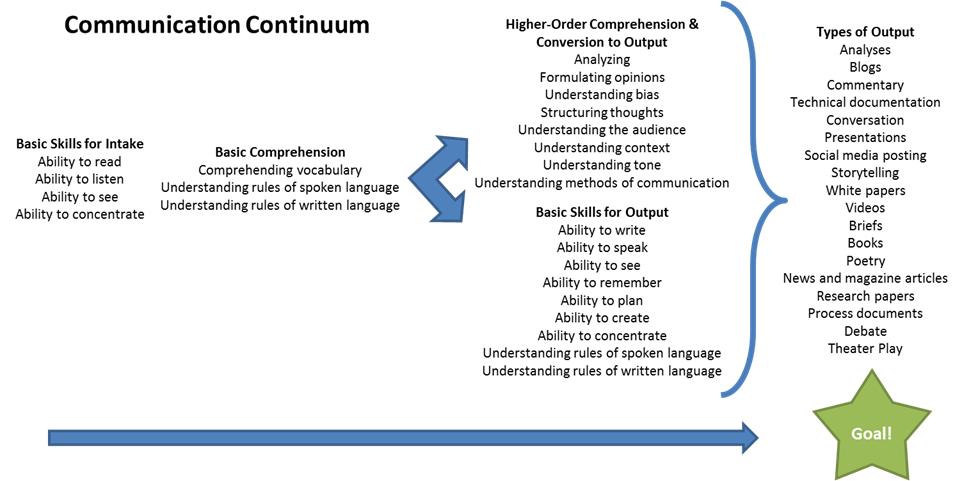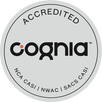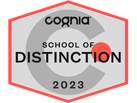IDEAVENTIONS ACADEMY
 Today’s topic is about our philosophy on Language Arts, or English. It's being posted early because I get to go have fun at the US Science and Engineering X-STEM Symposium happening today! In retrospect, my personal philosophy about how English (aka Language Arts) should be taught was defined in Middle School when I took GT Humanities (combined English/American History) from the one teacher that had the most influence in my educational success, then reinforced through my experiences in the workplace. In her class, English wasn’t learned in isolation. My reading level was stretched through the texts that we read, both fiction and nonfiction. My writing and analysis was developed through a series of assignments that included creating a newspaper, creating a diorama, drawing a political cartoon, as well as completing the traditional book report or writing assignment. Most importantly, she taught me how to read a newspaper and understand bias and she challenged me to research in order to support my opinions. Finally, she believed enough in me to take a chance on me, this kid who had just learned how to speak English five years before, and asked me to be the Editor-in-Chief of the school newspaper. Goal In short, we view the primary goal of Language Arts in primary and secondary education, as learning how to communicate effectively both orally and through writing. This deceptively simple statement is made up of a myriad of physical and mental skills and processes that need to come together, which I find easier to explain using a diagram. This process is so complex and is individual to each child’s experiences, strengths, weakness, likes and dislikes. Additionally, when viewed from an academic standpoint, it is interrelated with other academic subjects, such as science, history, and art. How In line with our philosophy in other subjects, where the work is hands-on and has a purpose, we look at the study of Language Arts, like in Math and Engineering, from a “So what?” point of view. With that in mind, Language Arts is integrated into Humanities, Science and Engineering to give it purpose and context, but is also being done with the child’s unique strengths and weaknesses in mind. Let’s look at how that is done. Humanities: Creative and Analytical Communications The clearest and easiest point of integration is with History and Social Studies. When one studies American History or World History and Cultures, to truly understand what shapes that history, one has to understand the culture. In order to understand the culture, one needs to understand its people. And to understand its people, one needs to understand their literature, their music and their art. This can be done through analysis of primary source documents, reading of biographies and autobiographies, reading fiction or historical fiction, reading poetry, as well as news articles. Through continued exposure to challenging material, children’s vocabulary will continue to grow. Output can come in many forms. It can be a written analysis, it can be a documentary, it can be a poem, it can be a Literature Circle, or it can be a political cartoon. All of these types of output require understanding the topic. By giving the teacher the opportunity to work in a small classroom with 8-10 kids, the teacher will have the opportunity to learn the strengths and weaknesses of each child, and to give kids choices in how to present output. We fully expect that kids will gravitate to what is easiest for them, and that’s ok. We’re first going to focus on building trust with the teacher and with each other. Then, when that trust has been built, children can then be challenged to expand on choosing output outside of their comfort zones. When the individual child is ready, then coaching in writing and grammar will begin for that student. To close out how Language Arts is included in the Humanities curriculum, the only homework all students will have every day is to read from (or listen to) a challenging book of their choice for at least 30 minutes. Science: Technical Communications Another major integration point is between Language Arts and Science. While there’s a lot of experimentation that occurs with science, scientists need to know how to present their results. Scientists also need to know to justify their idea. And even more basic than that, scientists need to be able to research a topic in order to understand it. The type of writing and communication that you do in a natural science classroom or laboratory is technical writing. Sentence structure, vocabulary, organization of ideas and message are all still important, but the audience is different and the tone is different. In science, students will experience a different, yet very important, type of Language Arts education. Engineering: Persuasive and Technical Communications Our Engineering classes present yet another opportunity to hone in students’ communications skills. From technical design specifications, to a website that describes their product, students will get additional education in technical communications, as well as in persuasive language. Will 4th-grade students entering the school know how to do this? We don’t think so. It’s our job to expose them to the methods for communicating, memorializing, and selling their projects. I could go on and on. In Art, the Graphic Novels unit integrates storytelling in a unique way and in Community Service, students will practice (or learn) about correspondence and current events. In conclusion, the teaching opportunities for Language Arts are tremendous. It our responsibility as a school to find those teaching opportunities and incorporate them in a way that is interesting, meaningful, and that makes sense to the kids. Resources specific to Language Arts, that we like:
If you have others you like, please share them! I love learning about other learning options and creative teaching methods out there.
0 Comments
 Yesterday I reconnected with an old college friend with whom I hadn’t spoken in 12 years. I had a different topic planned for today, but something he said really resonated with me. We talked about how at MIT we were all computer science and math focused, but there was also a creative side to us also and how now as parents, we want our kids to be well rounded. That immediately brought to mind my own schooling. I remember taking all of the required courses in high school and college, which were science and math focused, but all of my electives were foreign languages, specifically French and German. Learning foreign languages was my idea of educational fun (so was math). Achieving this balance is defined by the educational philosophy, but implemented through a schedule. In an educational perfect world, the day would be 48 hours long. That way all school-age children could get the recommended 9-10 hours of sleep, read at night before bed, exercise for one hour (PE), have time outside to appreciate nature, study math, science, history, language arts, music, arts, a foreign language, practice mindfulness and if inclined towards the STEM fields, do engineering and computer science, in addition to having a healthy dinner with the family (and breakfast and lunch and snacks), playing outside with friends, giving back to the community and having time to be bored so that they can become naturally creative. That’s a lot. But it’s so hard to compromise. So, how do you fit in all of these things without driving yourself and your children crazy? How do you do this without rushing through education like a freight train? The school day is generally about seven-hours long, and when you account for transitions, lunch, recess and breaks, those seven hours end up being five to five and one-half hours. When thinking about the ideal schedule, we wanted to provide children the opportunity to explore and participate in those topics that they are naturally drawn to, and in this case, it’s the STEM fields, while still providing a well-rounded education. We also knew that we wanted kids to be able to take their time to learn without feeling the stress and pressure that would prevent them from truly learning and enjoying the learning process. We started with what we considered absolutely core to our curriculum: Math, Humanities, Science and Nature Walk, which will meet daily or at least three times per week. We then added the next level of required classes: Physical Education, Computer Science, Engineering, which will meet twice per week. Lastly, we included those topics that are important and are therefore required classes, but that we could achieve by meeting once per week: Community Service, Art and Music. The other subjects like Foreign Languages, Creative Writing, or other in-depth classes in the Humanities or Sciences, are offered as part of our electives. We chose to hold classes in 90-minute blocks so that kids would have enough time to work on projects and labs without being rushed. When working with hands-on projects, kids need time to first figure out what they are doing, then they need time to do it. The times where we have seen the most frustration is when kids feel like they are being rushed through a project. This also gives teachers the flexibility to seize educational moments when they present themselves in the classroom. Lastly, we viewed the beginning and end of the day as anchors to each day. In a prior post, we deep-dived beginning each day with the nature walk. We also decided to end the day with the optional Activity Period. The Activity Period will get its own post, but in short, it’s a time of day where kids can enjoy social interactions with their friends in a loosely-structured setting. We want kids to start the day off right and end the day at school on a good note. We want kids to look forward to coming to school to continue working on their awesome project as well as to see their friends. At the end of the day, we want kids to remember their school experience fondly, be exposed to a variety of subjects and skills, learn how to learn and to enjoy learning.  Moving on to the “T” in STEM, today we will talk about Computer Science. At Ideaventions Academy, Computer Science is about learning how to be technology creators. Why Learn to Code? The applicability of a solid education in Computer Science is tremendous. Computers are all around us and are increasingly part of our daily lives. The next generation should have the skills to be technology producers not simply technology consumers. From being able to quickly develop financial models using code, to programming for data collection and analysis in a scientific lab, or implementing an app for your phone, programming is everywhere. The goals are for students to see technology for what it is, know that they can learn to manipulate that technology through code, and develop the confidence and creativity to solve any challenge. Code.org, the organization that brought us the Hour of Code, has eye-opening statistics about the opportunities in Computer Science and I urge you to visit their site. What Are We Teaching? I remember being at MIT taking 6.001, the introductory computer science class. The language that was used in the class was Scheme, a dialect of Lisp (another computer science language). The most fascinating thing about the class was the focus on the problem solving and structuring the solutions. The focus of the class wasn’t about learning a computer language, we learned all of the syntax we needed in one week, it was about using the language as a tool to solve problems computationally. Fast forward 20 years of work experience in the field. One thing that held constant is that computing technologies have continued to evolve and be created. The skills that the best computer programmers that I worked with would have were:
That in a nutshell is the philosophy behind the Computer Science program at Ideaventions Academy - we are looking to teach kids how to solve problems computationally and practice perseverance when programming. Whether the problem involves physical computing, online computing, or robotics, our goals are for children to learn and appreciate how technologies are created, as well as how to work through challenging situations where their programs and technology don’t behave as expected. We believe that really being able to accomplish these learning goals, while enjoying themselves, takes time. That is why students are required to take Computer Science every year. Using languages whose syntax is easy to learn (e.g., Scratch is a drag-and-drop language and Python’s syntax is easy to understand), we will work on a series of engaging, fun and creative projects using various technologies (e.g., App Inventor, Raspberry Pi, Arduino), progressively advancing to more difficult challenges. As Computer Science is not generally taught as a core subject in most high schools, there is no one curriculum that we can use and augment like we are planning to do in other subjects. Additionally, since we have yet to find an Elementary or Middle School in the country that requires Computer Science every year of school, the depth and breadth of a curriculum to span five full years doesn’t exist in the early grades. Therefore, for Computer Science we will be developing our own curriculum that is based on blending our own original content with some of the best computer science projects and technologies available. Leading the Change We need a movement in our schools to get more kids coding starting at a young age and hope that our program and the lessons learned from our implementation of a multi-year Computer Science curriculum serves as a model, both regionally and nationally. When I think of teaching and education, I think of it as a stool that supports the child. The three legs of this stool, academics, social well-being and emotional needs, should all be equal in length for the child to be balanced comfortably. Today's topic, movement, is primarily one that supports children's emotional needs, but it is also critical for their academic success and social growth. We believe that movement needs to be supported by the physical space, or context, the curriculum and most importantly, the teacher.
Context: Space and Furniture I like to stand when I am working on a difficult problem. When I read, I like to lie down. It's not to say that I can't read sitting down, but it's not the same as when I read lying down. Sitting doesn't feel natural to me, and because everything feels a little off, it's more difficult for me to concentrate. Luckily, as an adult, I have the freedom to define my optimal work environment. That's one of the wonderful things about Montessori classrooms. There's freedom of movement and there is freedom for each child to choose his or her own best learning space. We love seeing children working at tables, on the floor, or leaning against a bean bag. Designing a space and furnishing it in a way that it is able to accommodate the different learning needs of children is part of our core philosophy. Curriculum The curriculum provides the projects and experiments that facilitate movement in the classroom. Movement in the curriculum occurs during class time, as well as outside of class, where movement can be fast. Our days have been designed with movement in mind. Starting with our morning nature walk, to daily recess, the morning and afternoon breaks, and physical education twice weekly, children should be able to get opportunities to move and to move at different speeds. To us, these times during the day are as important as the academics because they support the emotional and social needs of children. Teachers Teachers are the most critical component of making movement work in a classroom. The teacher needs to be comfortable with movement and discourse in his or her own classroom, and whether the teacher is comfortable or not, depends on his or her teaching style. You can have a project-based curriculum and great furniture that both support movement, but without a teacher’s comfort with children walking and moving around, movement will not occur. Movement is one of those teaching concepts that forms the foundation for effective learning and social and emotional growth. By encouraging movement, kids learn more easily. By encouraging movement, they can better tolerate frustration when challenged with a social situation or a difficult challenge in class. By encouraging movement, kids have an opportunity to engage in social interactions with their friends on different levels, from the playground, to working in the classroom. Valerie Strauss said it best in her Washington Post blog: “In order for children to learn, they need to be able to pay attention. In order to pay attention, we need to let them move.” Read more from Valerie Strauss: |
AuthorJuliana Heitz is co-founder of Ideaventions Academy and is very excited to share the thinking behind the Academy. Archives
October 2023
Categories |
Copyright © 2010-2024| 12340 Pinecrest Road, Reston, Virginia 20191 | 703-860-0211 | [email protected] | Tax ID 27-2420631 | CEEB Code 470033
 RSS Feed
RSS Feed




